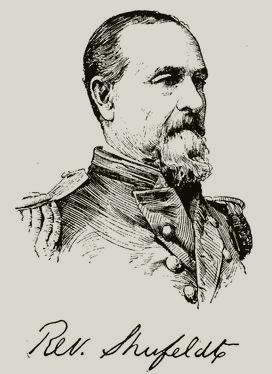The following chronology is adapted from Stephen R. Wise’s Lifeline of the Confederacy (Columbia: University of South Carolina, 1988), Robert E. Denney’s The Civil War Years: A Day-by-Day Chronicle (New York: Grammercy, 1992), and U.S. Navy's Civil War Naval Chronology, 1861-1865 (Washington: Navy Department, 1971). Note that some dates of Denbigh’s arrivals and departures are unknown, and so have been left out of this chronology.
Date Denbigh Elsewhere
September 10, 1863 Denbigh is written up in a Liverpool area newspaper as being fitted out "to go to China." This attempt at what a later generation would call "disinformation" fools almost no one, least of all U.S. Consul Thomas Dudley, who's been keeping a close eye on this particular vessel.
October 19, 1863 Denbigh sails from Liverpool for
Havana.
December 7, 1863 Assistant Secretary of the Navy Gustavus V. Fox forwards to the North Atlantic Blockading Squadron intelligence reports on Denbigh and other suspected blockade runners.
January 10, 1864 Denbigh arrives at
Mobile on her first blockade-running voyage. Confederate officers in
Mobile are discussing the previous day’s message from President Jefferson Davis, warning that
Mobile will soon be attacked by Admiral Farragut’s West Gulf Blockading Squadron.
March 14, 1864 Denbigh arrives at
Mobile on her second blockade-running voyage.
March 16, 1864 Denbigh clears
Mobile for Havana.
April 14, 1864 Denbigh arrives at
Mobile on her third blockade-running voyage, carrying (among other things) a large lot of cobbler’s tools.
April 16, 1864 Denbigh clears
Mobile for Havana.
April 30, 1864 Denbigh arrives at
Mobile on her fourth blockade-running voyage.
May 7, 1864 Denbigh clears
Mobile for Havana.
May 18, 1864 Denbigh arrives at
Mobile on her fifth blockade-running voyage.
Confederate Admiral Franklin Buchanan, "Old Buck," manages to get the new ironclad ram Tennessee over Dog River Bar and into Mobile Bay. C.S.S. Tennessee greatly increases the strength of Confederate forces on the bay, and sets the stage for one of the most dramatic naval actions of the war.
May 26, 1864 Denbigh clears
Mobile for Havana.
Union Rear Admiral Farragut, watching Confederate boats setting out mines at the entrance to Mobile Bay, writes that he has "come to the conclusion to fight the devil with fire, and therefore shall attach a torpedo to the bow of each ship, and see how it will work on the rebels -- if they can stand blowing up any better than we can."
June 7, 1864 Denbigh arrives at
Mobile on her sixth blockade-running voyage.
June 14, 1864 Denbigh clears
Mobile for Havana. At Cherbourg, France, Captain Semmes of the Confederate raider Alabama concludes that he will have to fight the U.S. Navy's steamer Kearsarge, which is waiting for him outside the harbor. Semmes judges that the ships are about evenly matched, and that he has a good chance of defeating the Union ship. He will be proven wrong five days later.
July 26, 1864 Denbigh clears
Mobile for Havana. Mobile is now cut off from the sea – Denbigh is the last blockade runner to safely escape Mobile. In just over a week’s time, Admiral Farragut will lead his ships into Mobile Bay.

 Barto Arnold
Barto Arnold








 <
<
 Robert Register
Robert Register 


